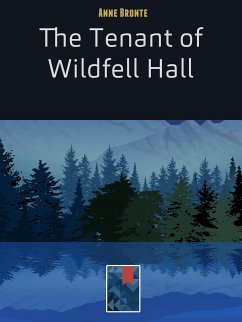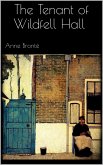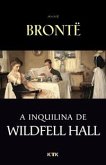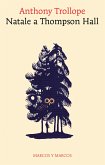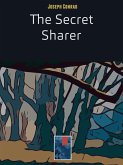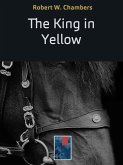Anne Brontë serves a twofold purpose in the study of what the Brontës wrote and were. In the first place, her gentle and delicate presence, her sad, short story, her hard life and early death, enter deeply into the poetry and tragedy that have always been entwined with the memory of the Brontës, as women and as writers; in the second, the books and poems that she wrote serve as matter of comparison by which to test the greatness of her two sisters. She is the measure of their genius—like them, yet not with them.
Many years after Anne’s death her brother-in-law protested against a supposed portrait of her, as giving a totally wrong impression of the ‘dear, gentle Anne Brontë.’ ‘Dear’ and ‘gentle’ indeed she seems to have been through life, the youngest and prettiest of the sisters, with a delicate complexion, a slender neck, and small, pleasant features. Notwithstanding, she possessed in full the Brontë seriousness, the Brontë strength of will. When her father asked her at four years old what a little child like her wanted most, the tiny creature replied—if it were not a Brontë it would be incredible!—‘Age and experience.’ When the three children started their ‘Island Plays’ together in 1827, Anne, who was then eight, chose Guernsey for her imaginary island, and peopled it with ‘Michael Sadler, Lord Bentinck, and Sir Henry Halford.’ She and Emily were constant companions, and there is evidence that they shared a common world of fancy from very early days to mature womanhood. ‘The Gondal Chronicles’ seem to have amused them for many years, and to have branched out into innumerable books, written in the ‘tiny writing’ of which Mr. Clement Shorter has given us facsimiles. ‘I am now engaged in writing the fourth volume of Solala Vernon’s Life,’ says Anne at twenty-one. And four years later Emily says, ‘The Gondals still flourish bright as ever. I am at present writing a work on the First War. Anne has been writing some articles on this and a book by Henry Sophona. We intend sticking firm by the rascals as long as they delight us, which I am glad to say they do at present.’
Many years after Anne’s death her brother-in-law protested against a supposed portrait of her, as giving a totally wrong impression of the ‘dear, gentle Anne Brontë.’ ‘Dear’ and ‘gentle’ indeed she seems to have been through life, the youngest and prettiest of the sisters, with a delicate complexion, a slender neck, and small, pleasant features. Notwithstanding, she possessed in full the Brontë seriousness, the Brontë strength of will. When her father asked her at four years old what a little child like her wanted most, the tiny creature replied—if it were not a Brontë it would be incredible!—‘Age and experience.’ When the three children started their ‘Island Plays’ together in 1827, Anne, who was then eight, chose Guernsey for her imaginary island, and peopled it with ‘Michael Sadler, Lord Bentinck, and Sir Henry Halford.’ She and Emily were constant companions, and there is evidence that they shared a common world of fancy from very early days to mature womanhood. ‘The Gondal Chronicles’ seem to have amused them for many years, and to have branched out into innumerable books, written in the ‘tiny writing’ of which Mr. Clement Shorter has given us facsimiles. ‘I am now engaged in writing the fourth volume of Solala Vernon’s Life,’ says Anne at twenty-one. And four years later Emily says, ‘The Gondals still flourish bright as ever. I am at present writing a work on the First War. Anne has been writing some articles on this and a book by Henry Sophona. We intend sticking firm by the rascals as long as they delight us, which I am glad to say they do at present.’

